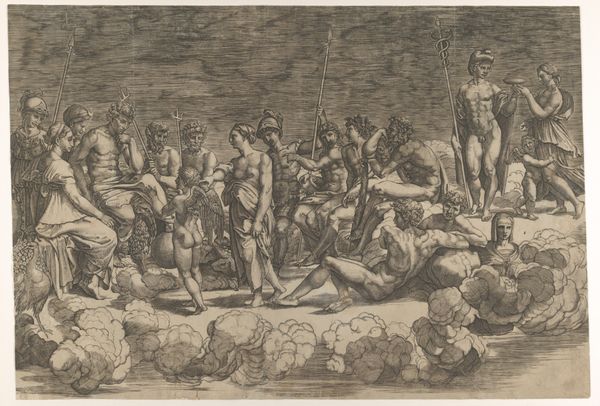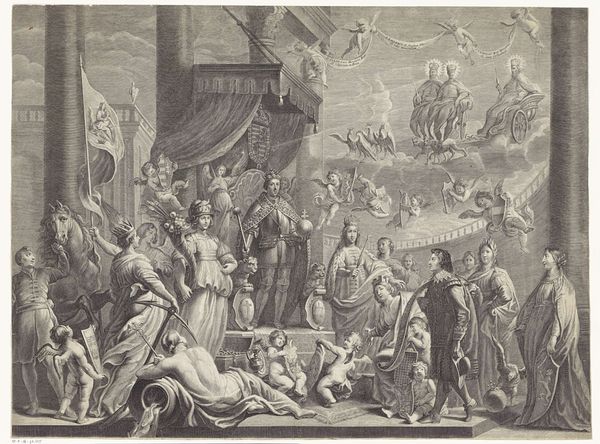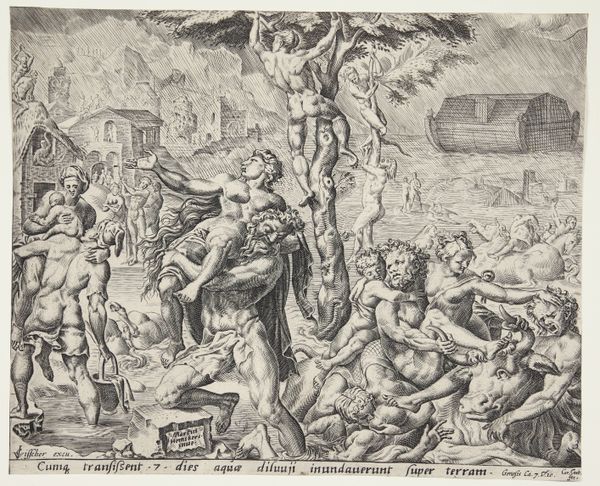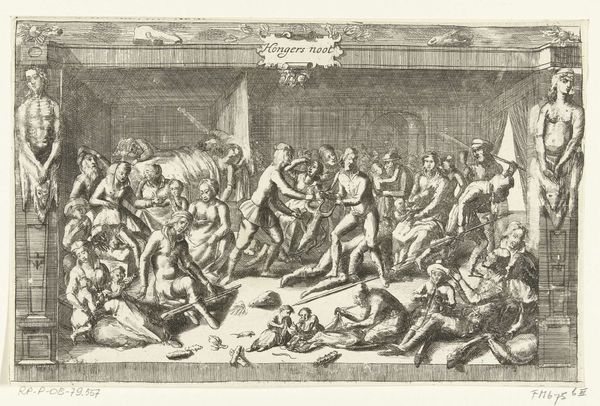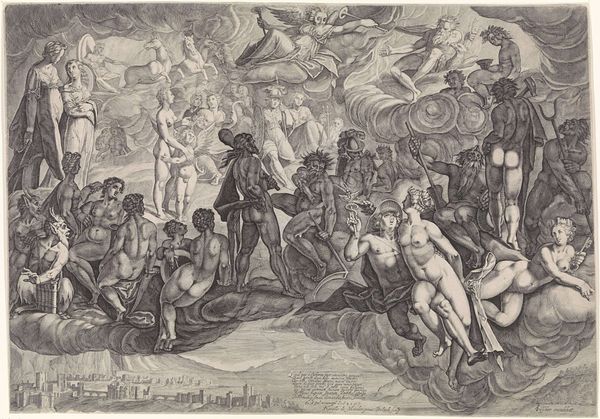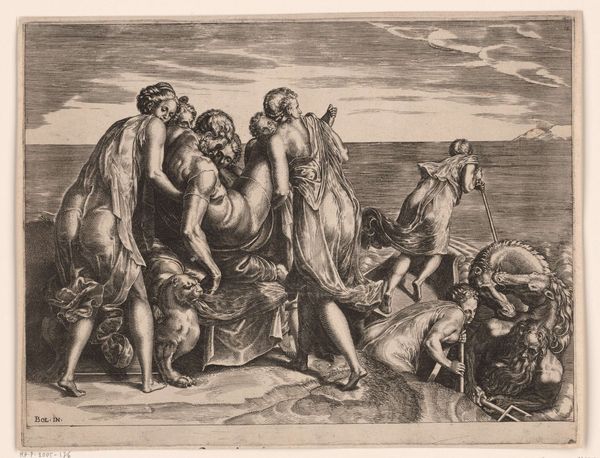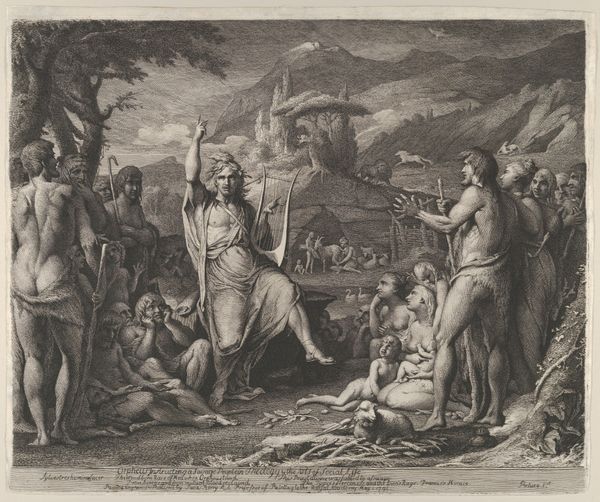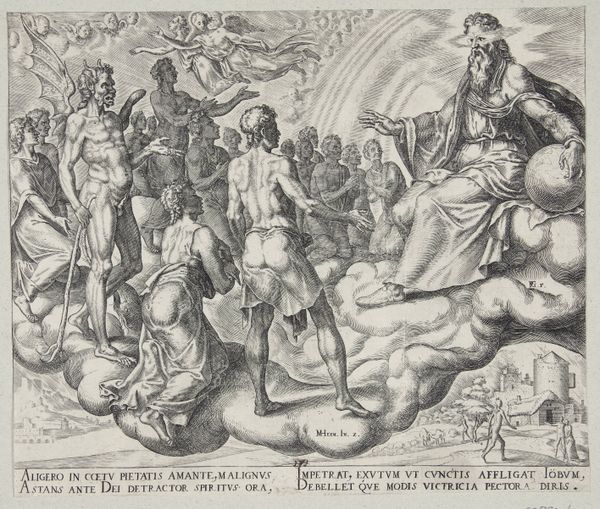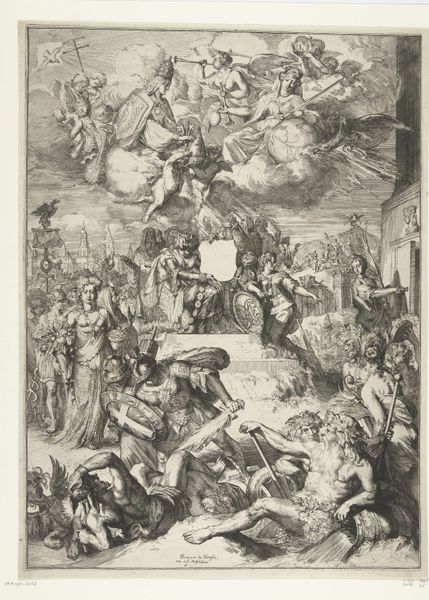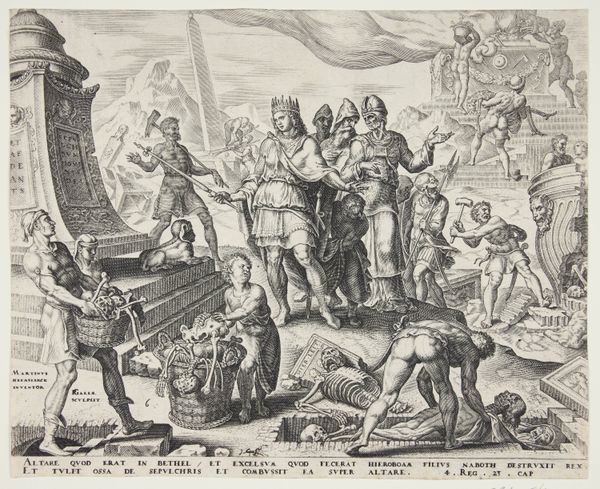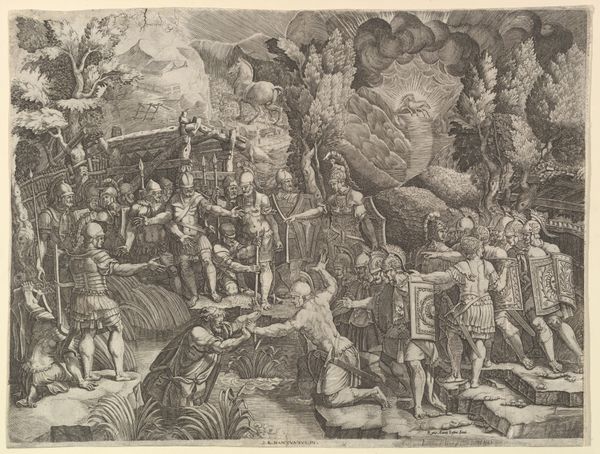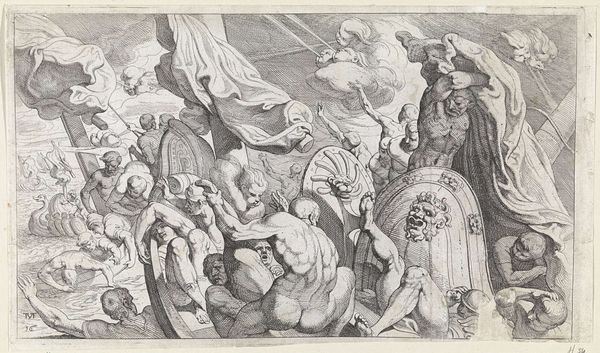
#
ink drawing
#
pen drawing
#
pen sketch
#
pencil sketch
#
junji ito style
#
personal sketchbook
#
ink drawing experimentation
#
pen-ink sketch
#
pen work
#
sketchbook drawing
Dimensions: height 377 mm, width 524 mm
Copyright: Rijks Museum: Open Domain
Giovanni Jacopo Caraglio made this engraving called "Assembly of Gods on Olympus," sometime in the mid-16th century. It presents a classical subject – the gods and goddesses of Greco-Roman mythology relaxing together in their celestial home. But what was the social function of such an image at that moment in history? Italy, where Caraglio worked, was then a patchwork of independent city-states, each with its own ruling families and political factions. Powerful families, such as the Medici, used patronage of the arts to reinforce their social status. In this context, classical imagery served to elevate and ennoble its patrons, associating them with the grandeur and cultural achievements of the ancient world. But it also served as a kind of utopian vision for the present. The figures’ relaxed poses suggest that, on Mount Olympus at least, power relations between the gods were harmonious and their rule was just. Understanding the iconography of the gods, as well as the social and political forces at play in Renaissance Italy, allows the historian to understand the image's intended impact more fully.
Comments
No comments
Be the first to comment and join the conversation on the ultimate creative platform.
